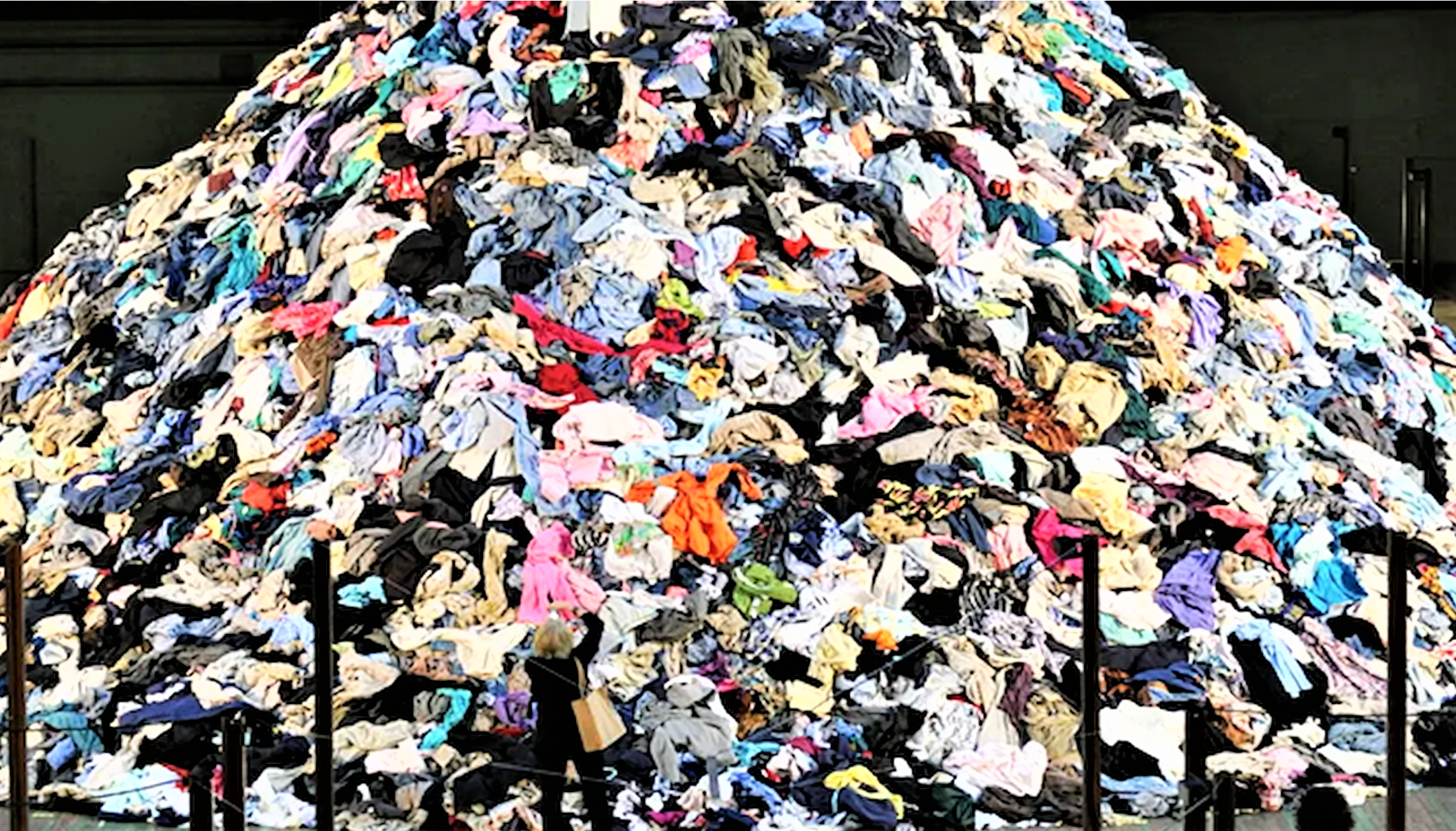By Jessica Scott-Reid
Jessica is a Canadian writer, animal advocate and plant-based food expert. Her work appears regularly in media across Canada and the US.
When it comes to taking individual action in the fight against climate breakdown, making changes to how we eat, how we get around and how we deal with waste are often top of mind. There is however, another everyday choice that can make a big dent in our eco-impact: how we dress.
In an age of hyper-accessible fast fashion, textiles have become one of the earth’s top pollutants. According to the National Resources Defense Council (NRDC), “textile mills generate one-fifth of the world's industrial water pollution,” and in China alone, textile factories release about three billion tons of soot into the air every year.
A report by The World Counts also found that fashion is responsible for 92 million tons of solid waste per year, as current trends are to buy cheap and quickly discard. A landmark report from resale service ThredUp, found that the global textile industry produces more carbon emissions than the airline and maritime industries combined.
So, for those of us concerned with lessening our personal contribution to climate chaos, what are some of the ways we can dress for the planet?
Opt-Out of New
First and foremost, as with most consumer goods, using what already exists rather than buying new is perhaps the most powerful move for eco-conscious consumers. Today this takes many forms, from mending and reinventing items you already have, to swapping clothes with friends, thrifting at local second-hand shops, and buying used luxury items online through platforms like Poshmark.
By not adding to the demand for new goods and using what already exists rather than sending it to landfills, we can cut our individual eco-footprint substantially. Research shows that the average number of times a garment is worn before it’s thrown away has decreased by 36% in the last 15 years.
And further research shows that by using an item of clothing for just three months longer can “lead to a 5-10 percent reduction in each [item’s] carbon, water and waste footprints,” researcher Sonali Diddi told Scientific American. Extending that to nine months, according to Leigh Mapledoram, sustainability expert from Wrap UK, could reduce that impact by 20-30%.
Thankfully, shopping second-hand appears to be a booming trend. ThredUp found that around 40% of Gen Z-ers were buying second hand in 2019, compared with less than 30% in 2016. And Financial Times reports that 25% of global shoppers bought a used item in 2019.
Avoid Animal Textiles
Though producers of textiles derived from animals — such as fur, leather and wool — will often promote them as “natural” and “eco-friendly,” the reality is that production methods for these products come with heavy eco-footprints. Fur farming for example, is a form of animal agriculture that contributes significantly to climate change. And whether an animal is farmed or inhumanely caught in the wild, once skinned there are bodies to be disposed of.
A report by Humane Society of the United States explains that “significant air pollutants are released when disposing of animal carcasses by incineration,” including carbon monoxide, nitrogen oxides, sulfur dioxide, hydrochloric acid and others. In addition, carcasses are often transported to incineration facilities in carbon-heavy refrigerated trucks.
Chemical processing or “dressing” of furs to prevent decay also causes ecological damage. According to The Guardian, the World Bank has ranked fur dressing “as one of the world's five worst industries for toxic-metal pollution.”
Leather is much the same. Farming animals, processing their skins (tanning, fatliquoring, dyeing), and transporting materials all contribute to ecological harm. Advocacy group Collective Fashion Justice calculated that the amount of water required to produce one leather handbag equals the amount a person would drink over 23 years. “A leather jacket,” the group told Vogue Business, “is equal to 176 kg of carbon-equivalent greenhouse gas emissions.”
Collective Fashion Justice also found that wool production particularly harms biodiversity. “From habitat degradation caused by grazing sheep to the chemicals used in scouring, the entire process of rearing sheep and turning shorn wool into usable fiber is riddled with threats to wildlife,” it stated in a recent report.
Be Alert to Greenwashing
As conscious consumerism grows, big brands have taken notice, with many fast fashion producers and some high-end designers jumping on the sustainability bandwagon. However, a 2021 report by Changing Markets Foundation looked into sustainability claims made by fashion companies and the research found that 39% of the products analyzed came with some kind of green tag such as “recycled”, “sustainable” “eco” or “low-impact". However, when those claims were measured against the UK Competition and Markets Authority guidelines on avoiding greenwashing, well over half did not hold up.
Individual consumers have a lot of power in the fight against climate change. Our daily decisions can help us tread a little lighter on our ailing planet. Dressing for the planet can be fun, expressive and ecologically mindful, when we simply use what's already in circulation, say no to animal products, and do our research before supporting big brands that claim to care.




